Tweets
Replying to @josecastillo
And the final design of the LCD. These are in process as well, though the lockdowns in Shenzhen may delay things. I designed it both to fit on the Feather, and to be breadboard-friendly (pins at 0.1 inch pitch). Ideal for a clock or numeric display, with 5 handy icons for status.
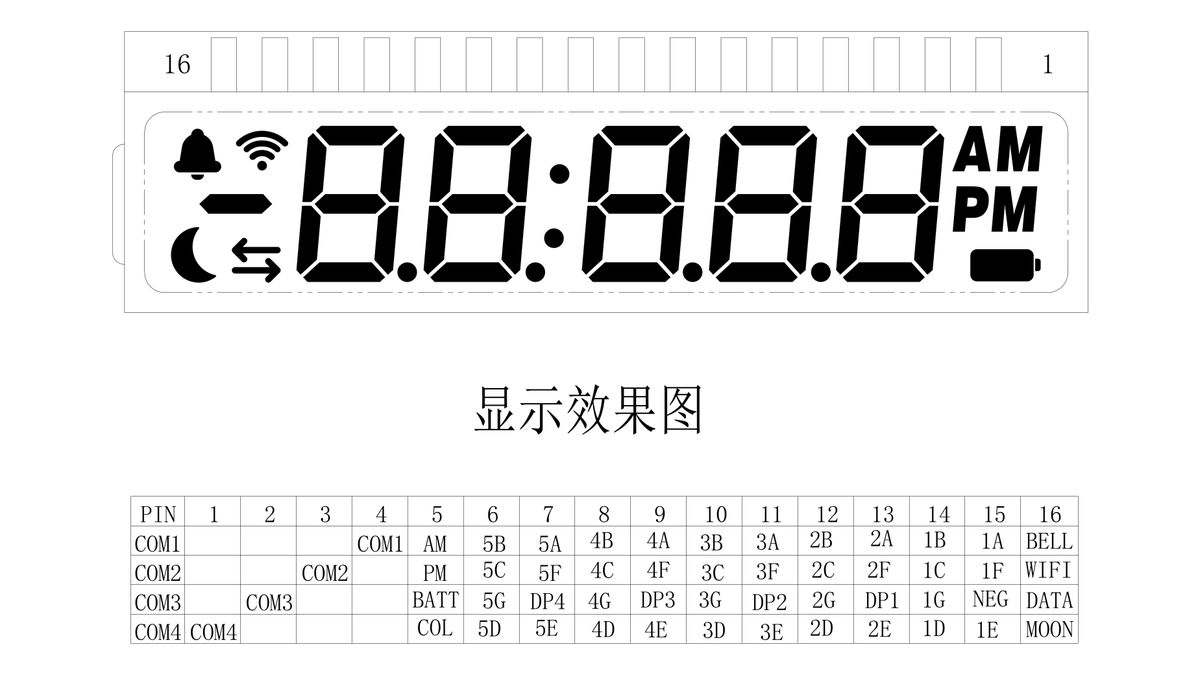
(original)
Replying to @josecastillo
The (hopefully) final design of the board. This was my first KiCad project, and it’s currently in process at @oshpark! Again, you can see my obsession with self-documenting PCBs; there are a couple of options to play with here, and they’re explained right there on the board.
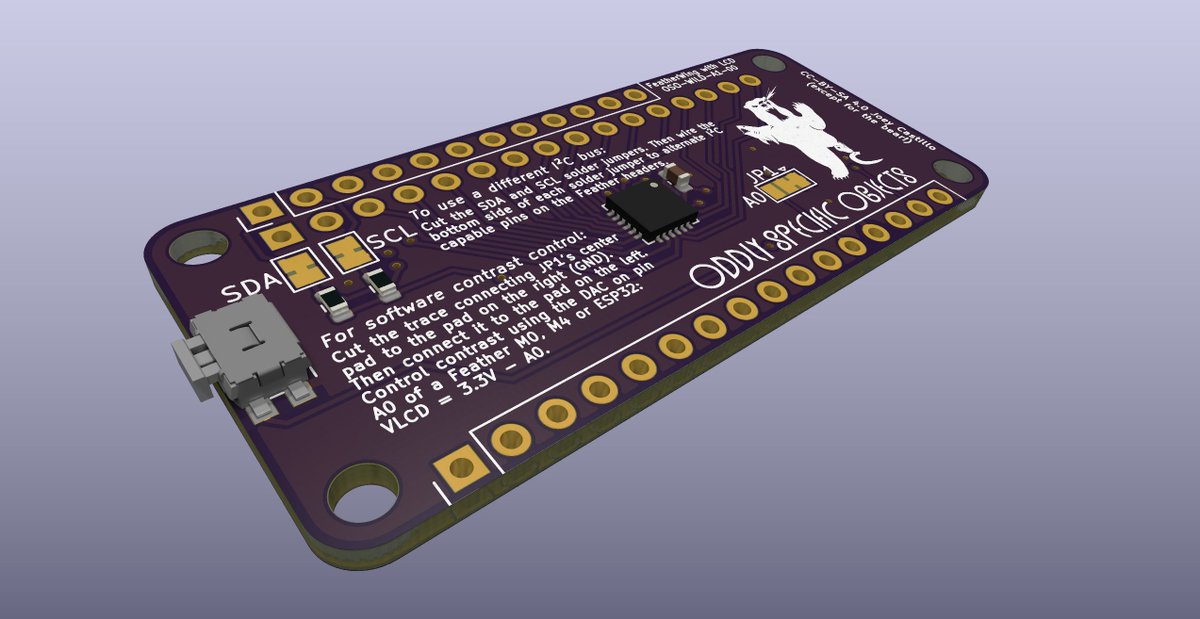
(original)
Replying to @josecastillo
To be clear: the watch will ship, come hell or high water. I’ve started putting in purchase orders for the parts, and while lead times are killing me — there will be a fuller backer update on this soon — I’m gonna get it done. I just might also do this while I’m waiting on parts.
(original)
Replying to @josecastillo
In a weird way, until I fulfill the Sensor Watch campaign, I can’t go back to full-time dayjob life; imagine getting hired by Apple and explaining “oh also, i have to ship this Apple Watch competitor later this year — you don’t mind, do you?” So I have to do work in the meantime.
(original)
Replying to @josecastillo
Question: why am I doing this? Partly because after a year working with LCD tech and low power gadgetry, I think I have the right skills to make this thing real. But also because after I ship the “Special Edition” watch boards, I have a long wait for the SAM L22 chips to come in.
(original)
Replying to @bencpye
Standard segment LCDs are just that low power! The tradeoff is in display complexity; you can’t do as much with just a few segments as you can with a matrix of pixels. But if you can embrace the tradeoffs, it’s a superb (and superbly cheap) low power technology!
(original)
Replying to @josecastillo
This is with the Feather M0. An M4 Express runs this at about 870µA, but a lot of that is the Neopixel; if you were to remove it or cut its power trace, the SAM D51 has sleep modes that go far lower. Stoked to test with the new ESP32-S2 Feather, which was optimized for low power!
(original)
Replying to @josecastillo
For comparison, doing the same thing with an OLED would cost from 2 mA - 30 mA, depending on how many pixels you have on. Between 9 and 10 mA is typical, which means an LCD can deliver an always-on display with nearly 100 times the battery life of an OLED.
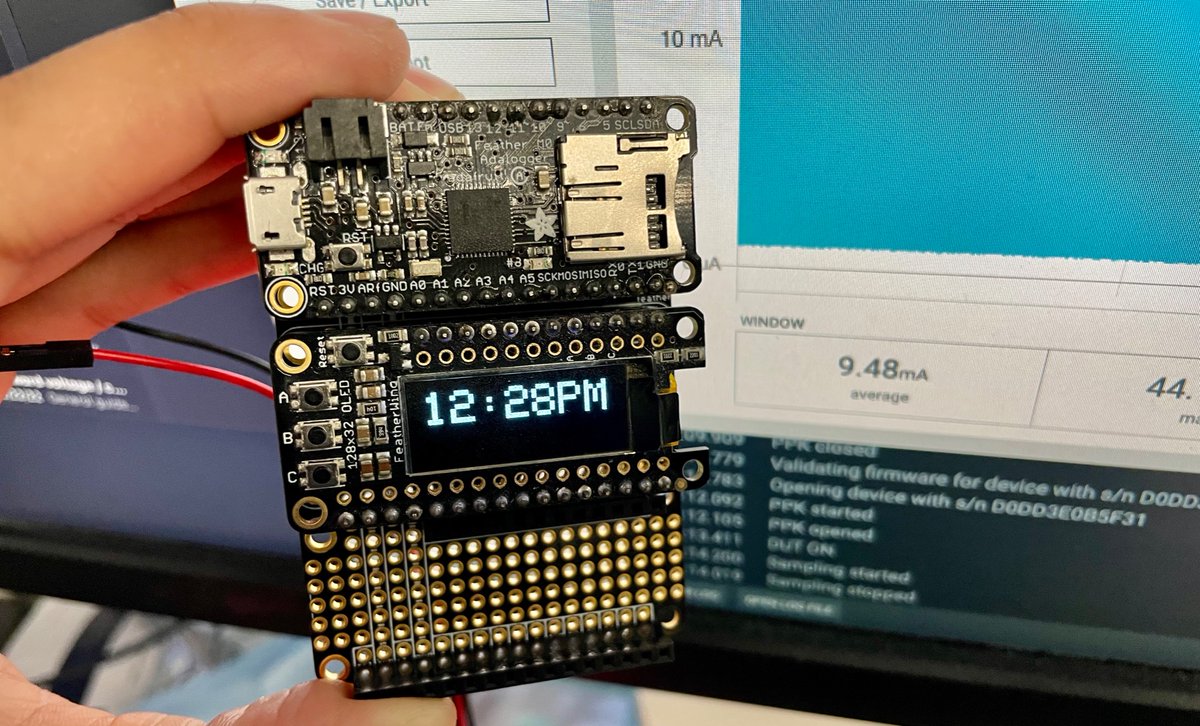
(original)
Replying to @josecastillo
This is not the final design, but it’s close enough to run power tests. The wing draws something on the order of 12µA. By keeping the Feather M0 mostly in sleep, overall current draw can be <0.01 mA, which would yield 25 weeks on a 400mAh battery like this https://www.adafruit.com/product/3898
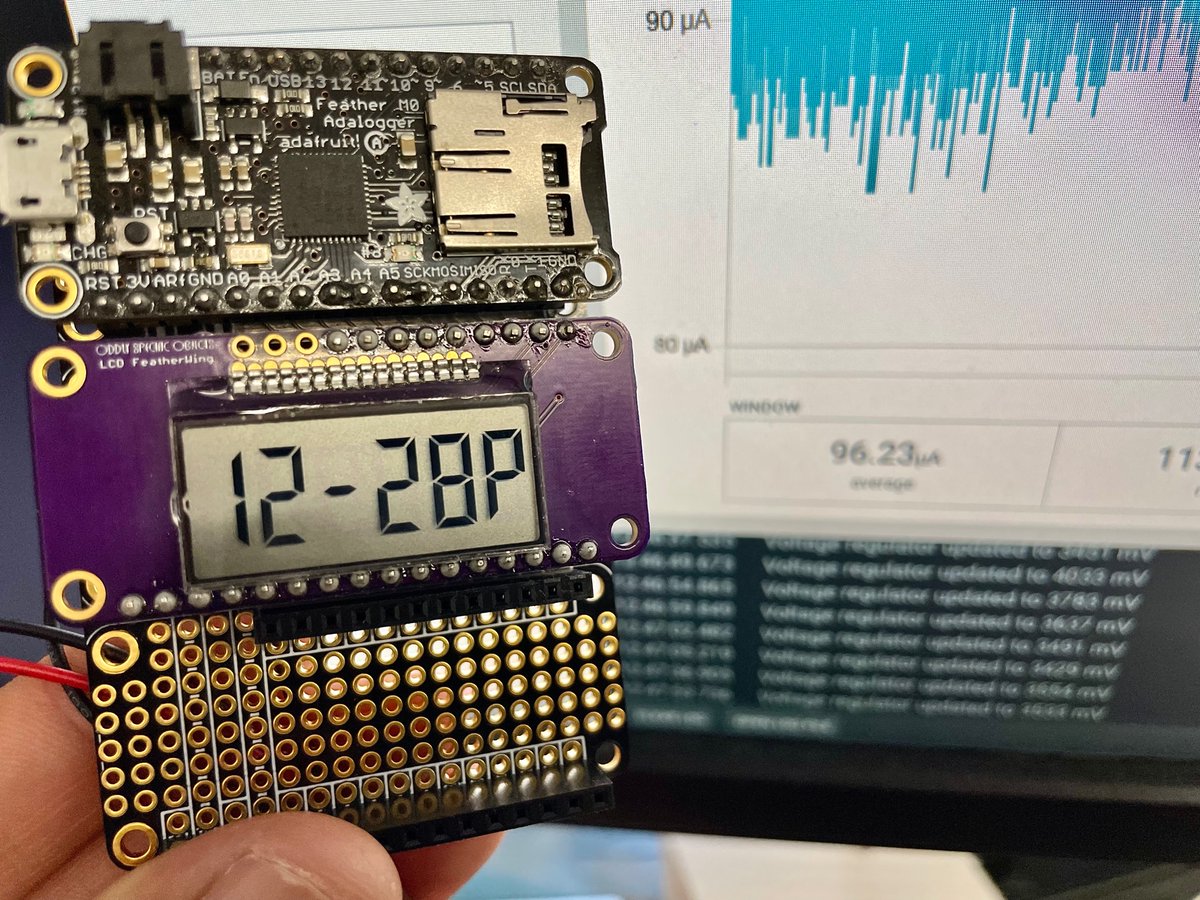
(original)
ok. so. I’ve resisted tweeting about this one because I have, y’know, another product to ship this year (the watch). But I can walk and chew gum at the same time, so here goes: I’m getting back to my roots and designing a FeatherWing. Specifically an ultra-low-power LCD wing. 1/?
(original)
Replying to @davidskeck
That kind of RF stuff is definitely above my head, but at a glance this Sparkfun breakout for the chip uses a pretty large 100µH inductor that alas definitely wouldn’t fit in the available area. But IDK if there are other inductors that might work. https://www.sparkfun.com/products/15441
(original)
Replying to @davidskeck
What a fascinating part! At a glance it looks like the chip itself should fit in the available area, and the voltage is compatible; the one piece I’m not sure about is that it needs an antenna in the form of a resistor, capacitor and chunky inductor. Uncertain if that would fit.
(original)
RT @OlenaHalushka: Stolen lives
By Sasha Anisimova from Kharkiv
(original)
Replying to @bradanlane
The second resource is this ST app note that walks through doing exactly what you’re describing. Note in particular the diagram on page 13 that shows a circuit for generating the bias voltages; this lets you drive the COM lines high, low, or to 1.5 volts. https://www.st.com/resource/en/application_note/cd00176444-stm32f10xxx-lcd-glass-driver-firmware-stmicroelectronics.pdf
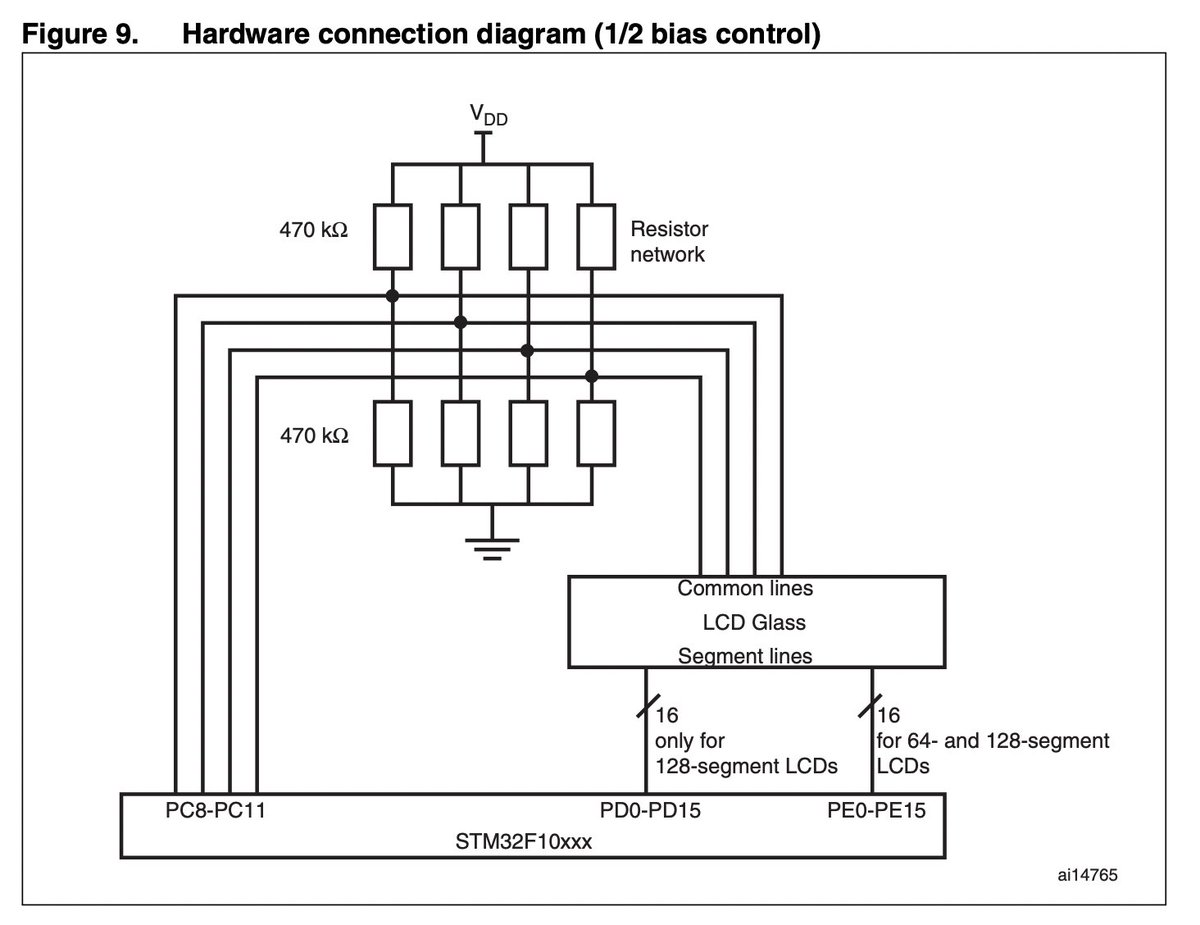
(original)
Replying to @bradanlane
I have two resources for you actually! First is my Remoticon talk where I did a deep dive into segment LCDs. This is timestamped to the section on duty and bias; if you only have five minutes, watch 11:00-14:40 (tho the first half explains more basics). https://youtu.be/fhKYbJMW5_U?t=660
(original)
Replying to @blackinkjar
I liked knoll day! The one that really got me though was watch.
(original)
Replying to @josecastillo
meanwhile my bell curve is becoming sort of a mesa…
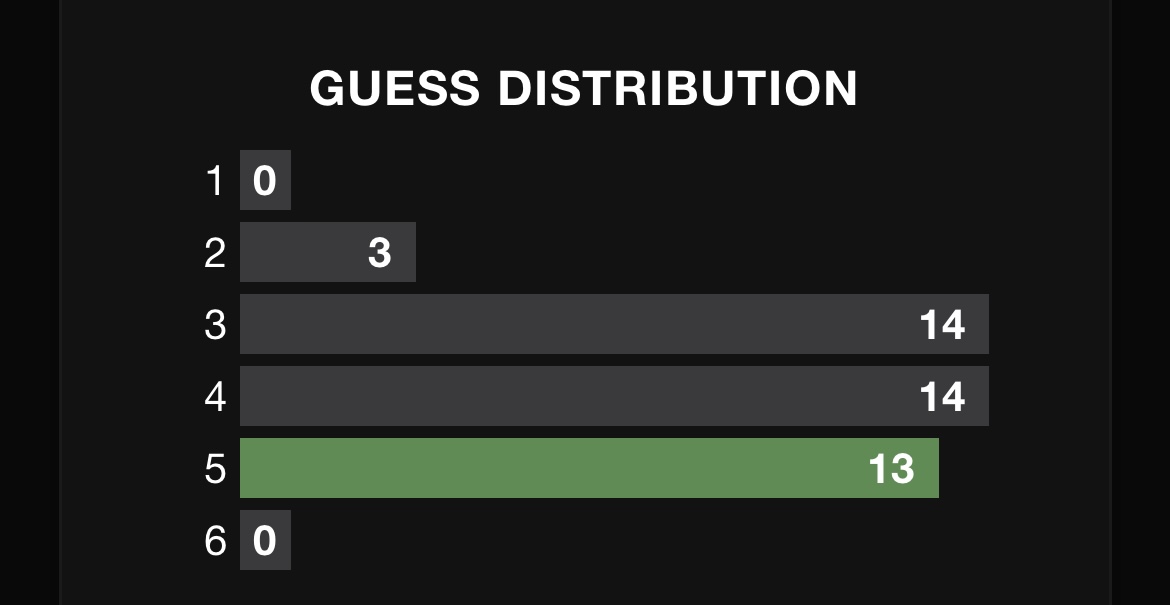
(original)
Replying to @josecastillo
I was so convinced I had it on 4. In fact it would have been a way better word. Wordle 271 5/6*
⬛⬛🟨⬛🟩
⬛🟨⬛⬛🟩
⬛🟩🟨🟩🟩
🟩🟩⬛🟩🟩
🟩🟩🟩🟩🟩(original)
Replying to @josecastillo
so far the pen works like a pen, but I think that much was a freebie. Did learn a lot modeling it in OpenSCAD tho! The refill is held in writing position by one M2.5 screw and nut, which is also meant to affix the back part of the gadget (or whatever else you want to put there).
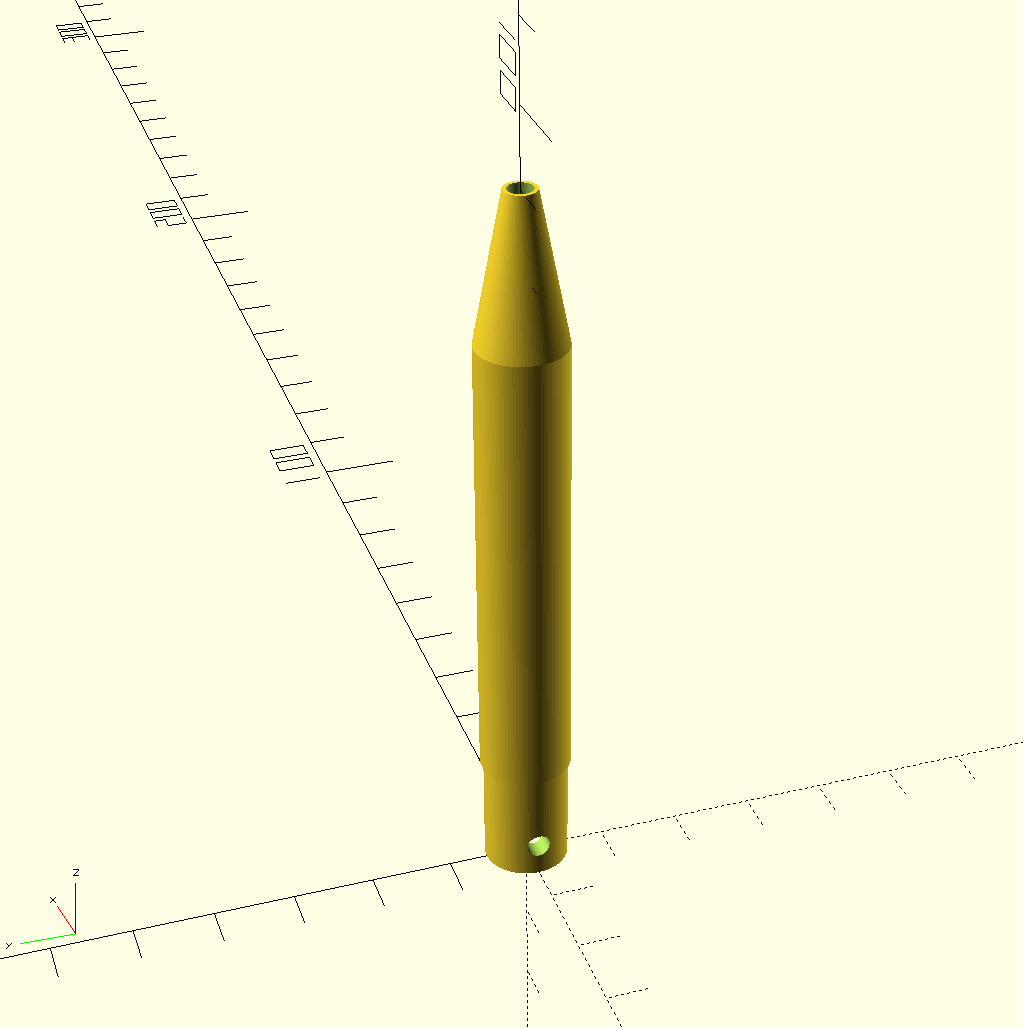
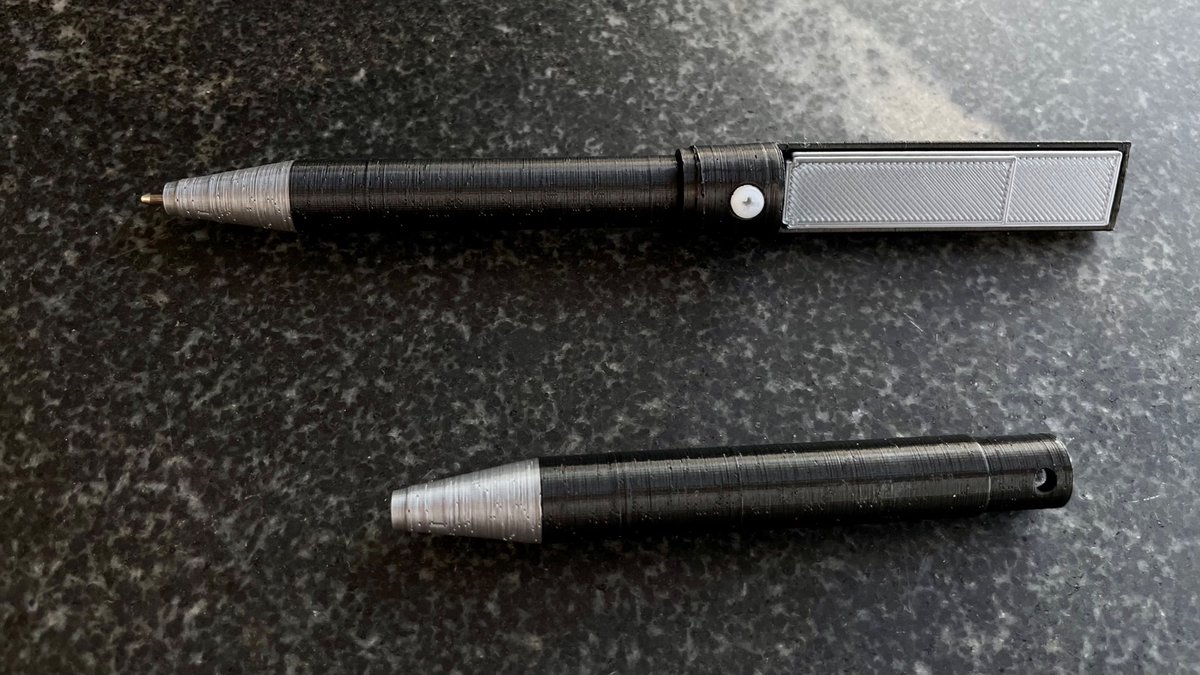

(original)
from time to time I bike past this school bus on the way to the shop, and you know what, bus? it’s okay. sometimes I don’t either.


(original)
Replying to @crulge
it is very weird that an Elon fanboy shows up in comments on a followup with bizarre insinuations about this anonymous poster. https://archive.ph/vGTaR#g2r3mjq
(original)
Replying to @crulge
but the search engine says search engines are trustworthy!

(original)
Replying to @_GeorgeRudolf
Modern, although alas a part that’s marked for obsolescence. A Sharp Memory Display. https://www.digikey.com/short/qp793p2h
(original)
Replying to @josecastillo
I’ve been playing with fit tests all day and now my left hand is just covered in Space Ink.
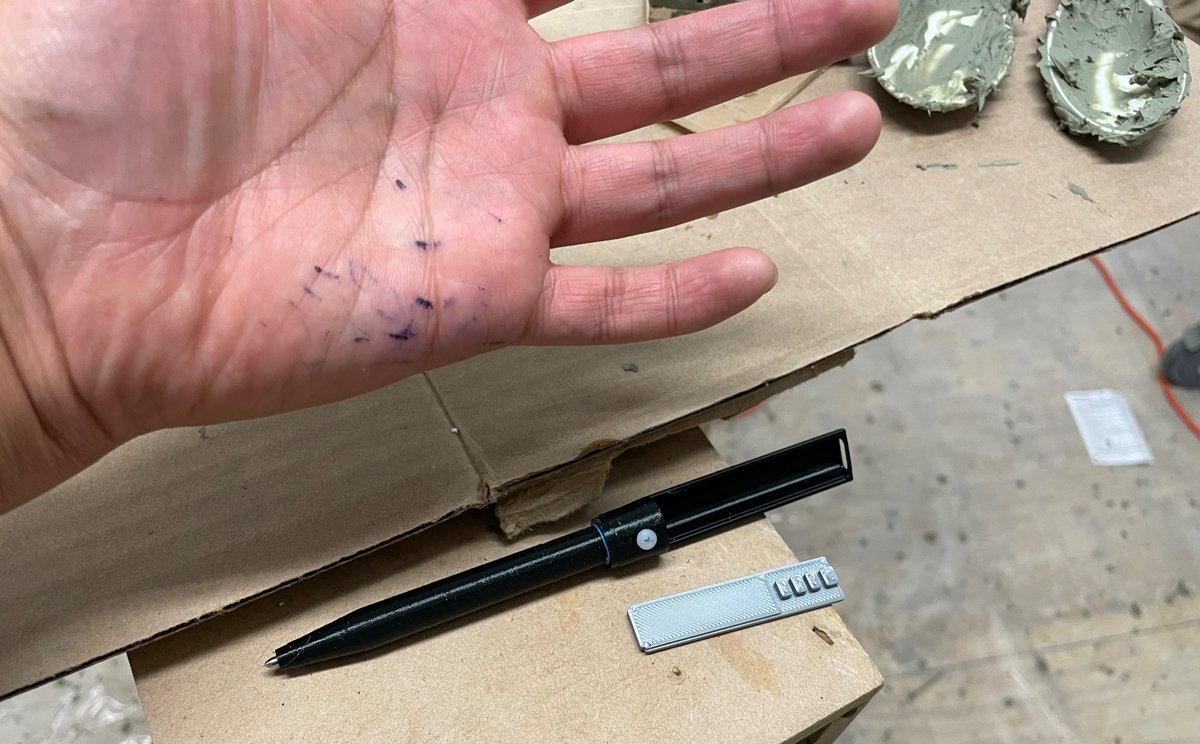
(original)
Replying to @josecastillo
Have crazier things been attempted? Yes. Have crazier things been attempted by me? Also yes. Have crazier things been attempted by me this month? 😬
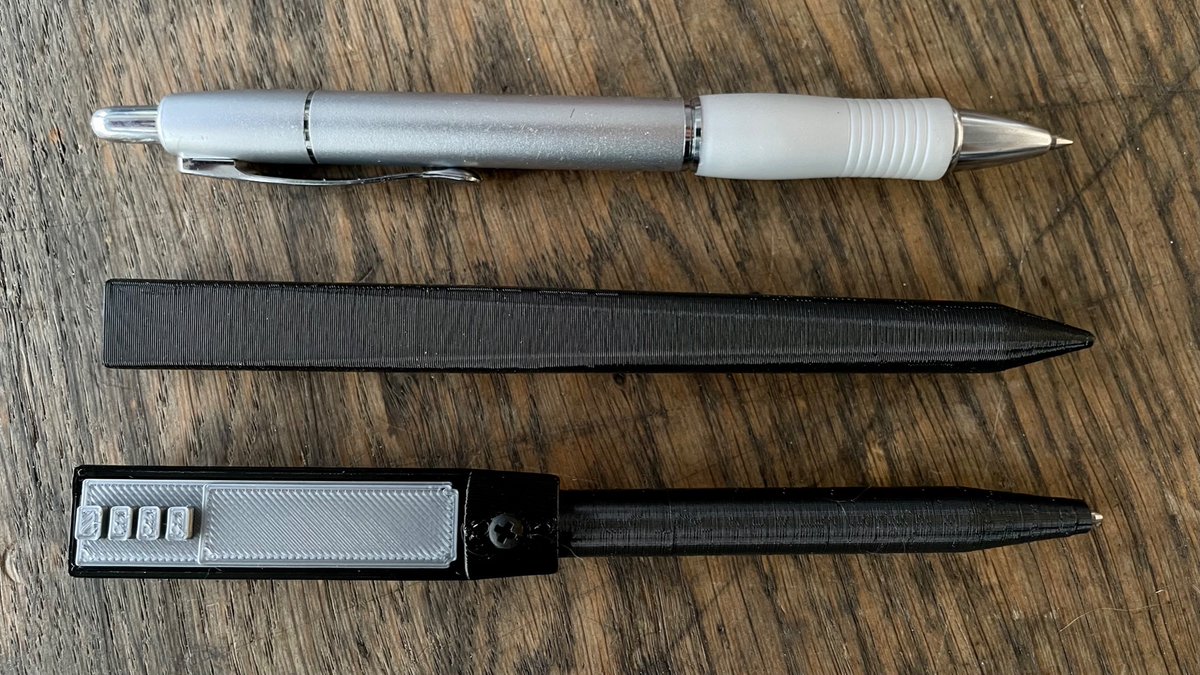
(original)
Replying to @josecastillo
messed this one up with a dumb miscalculation of the rules. The game is subtle. Wordle 269 5/6*
🟨⬛⬛🟩🟩
⬛🟨⬛🟩🟩
⬛⬛🟩🟩🟩
⬛⬛🟩🟩🟩
🟩🟩🟩🟩🟩(original)
Replying to @bradanlane and @MakeAugusta
rechargeable though! say we add a screen and it’s 5 µA in deep sleep: that’s 90 days standby. And with an active mode at 30-40 µA per MHz? The watch gets a lot done at just 4 MHz, a veritable sip of power. I admit it’ll be a challenge, but I do these things to challenge myself :)
(original)
Replying to @MakeAugusta
I’ve been looking at using a battery like this, which is the thing that forces me into a different realm of low power gadgetry. Still, low power is where I’m at right now and I’m v stoked about it; it’s just the lack of chips I like that’s killing me. https://www.digikey.com/short/w8br5mvz
(original)
Replying to @MakeAugusta
I don’t think that leaves room for the pen! The space pen refill is 9 cm long and has to sit centered in the body; figure another 5-6 for the gadget and you’re at 14-15 cm — ideal pen range. Also diameter: I’d like to keep it under 14mm for writing comfort, and a 18650 is chonky.
(original)
Replying to @JeremyGrosser and @MakeAugusta
Would you believe I have some in a DigiKey shopping cart right now! Maybe, but tbh this might be a job for USB; think it makes more sense to plug the pen in at the back than try to leave it out in the sun.
(original)
Replying to @josecastillo
if I do this it’ll be because I need to learn more about enclosure design, and as a starting point here’s a clever keychain pen that takes Fisher Space Pen refills. I sense I’ll aim to use those; the pen part needs to be short to leave room for the gadget. https://www.thingiverse.com/thing:4841936
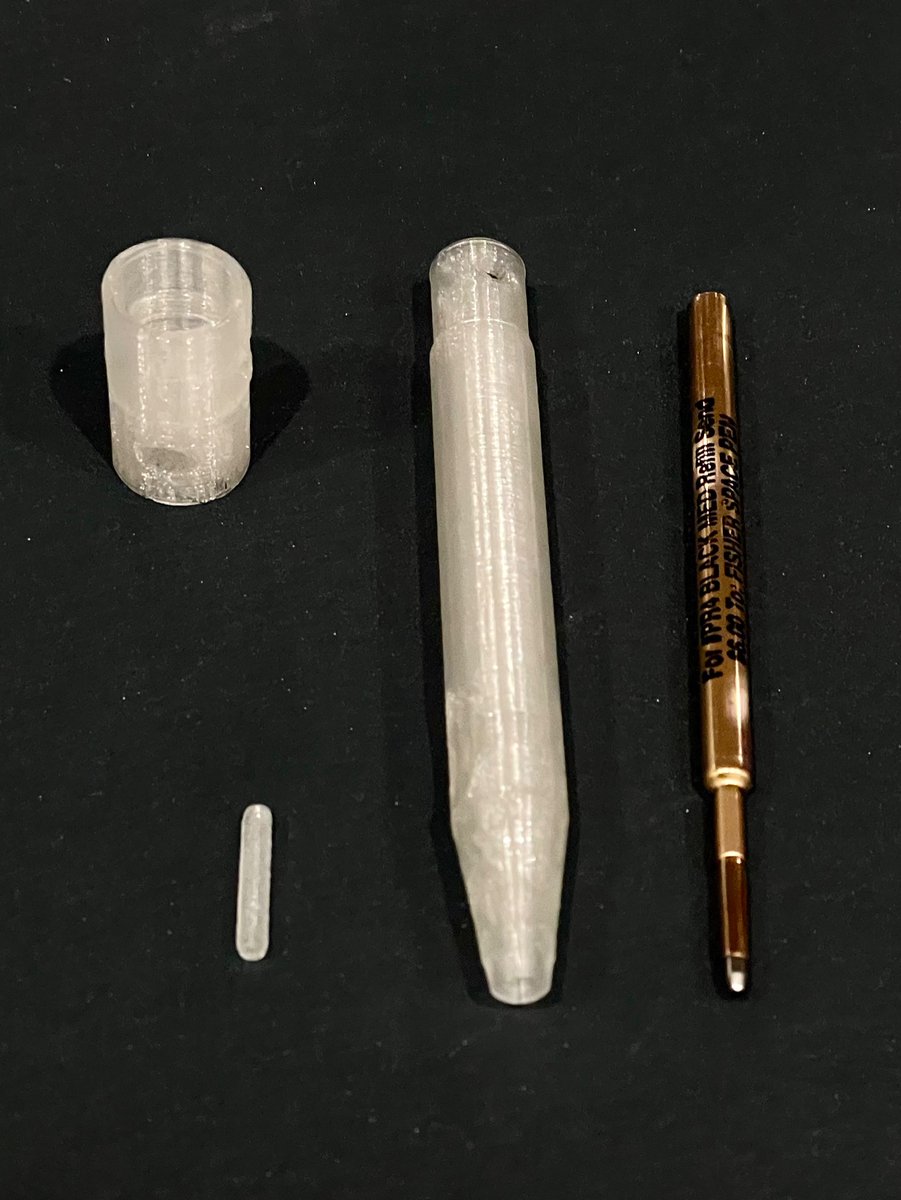
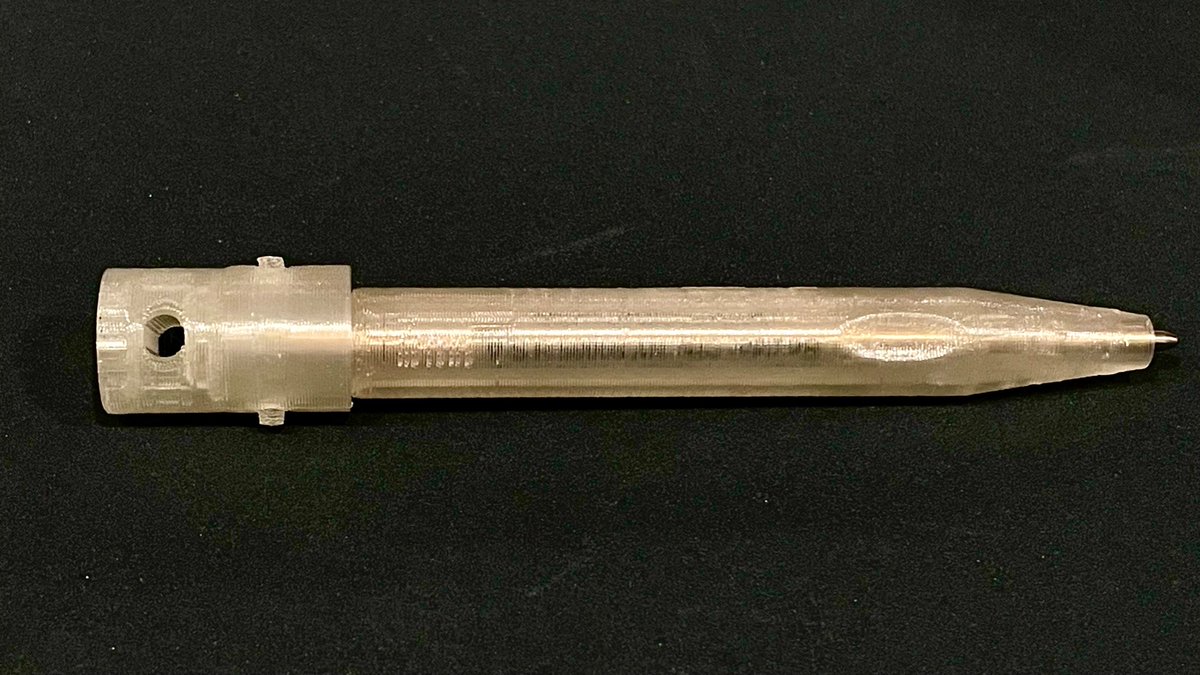
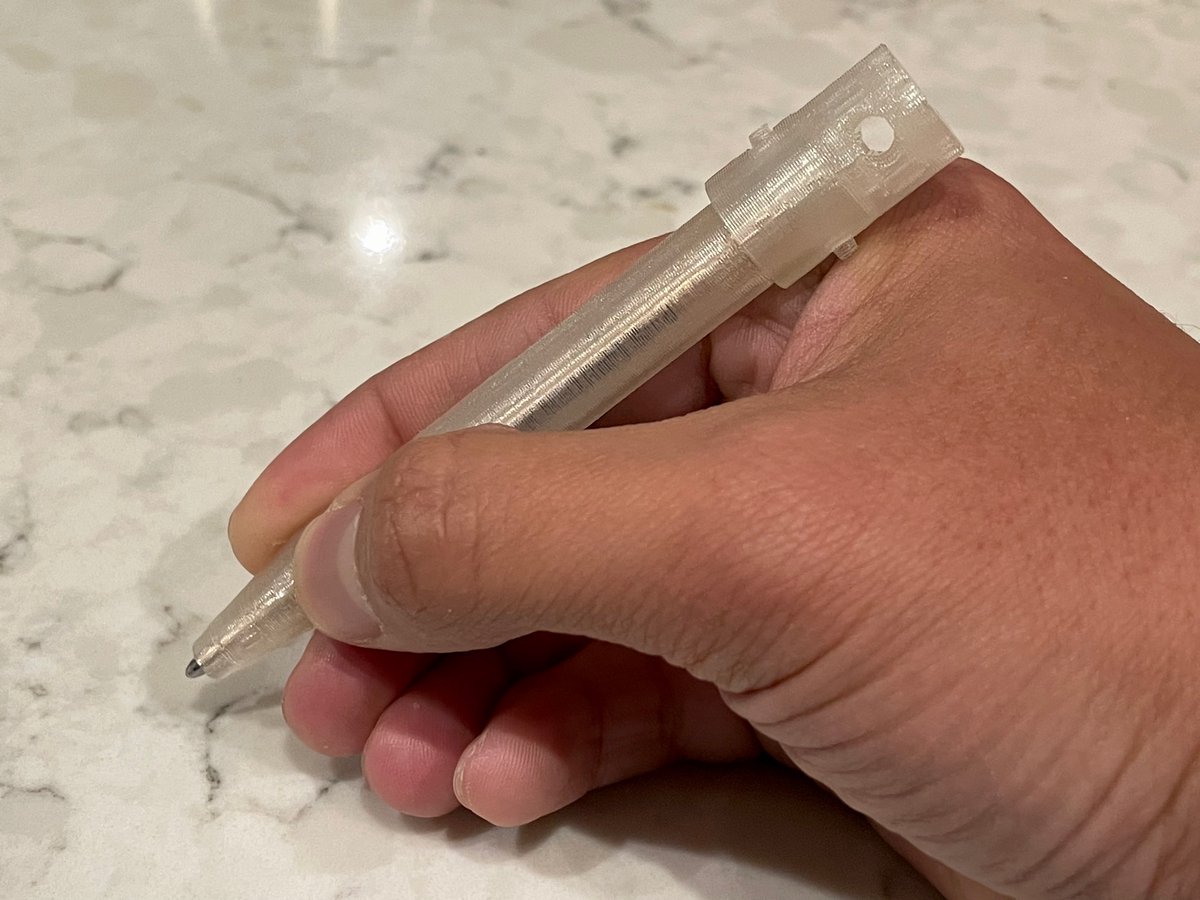
(original)
Replying to @MakeAugusta
Power constraints are the thing. I can fit maybe 11 mAh of battery into this gadget. The two chips I’d like to use for this can sleep at 0.5~3µA, which is weeks to months in standby. RP2040 is great, but dormant mode only gets down to 180 µA; even asleep it’d drain in a few days.
(original)
Replying to @MakeAugusta
Haha the sad part is even if I design it, I have enough chips on hand to make between zero and three of them; then it’s slim pickings ‘til 2023 😬
(original)
Replying to @josecastillo
ok fine i will do it
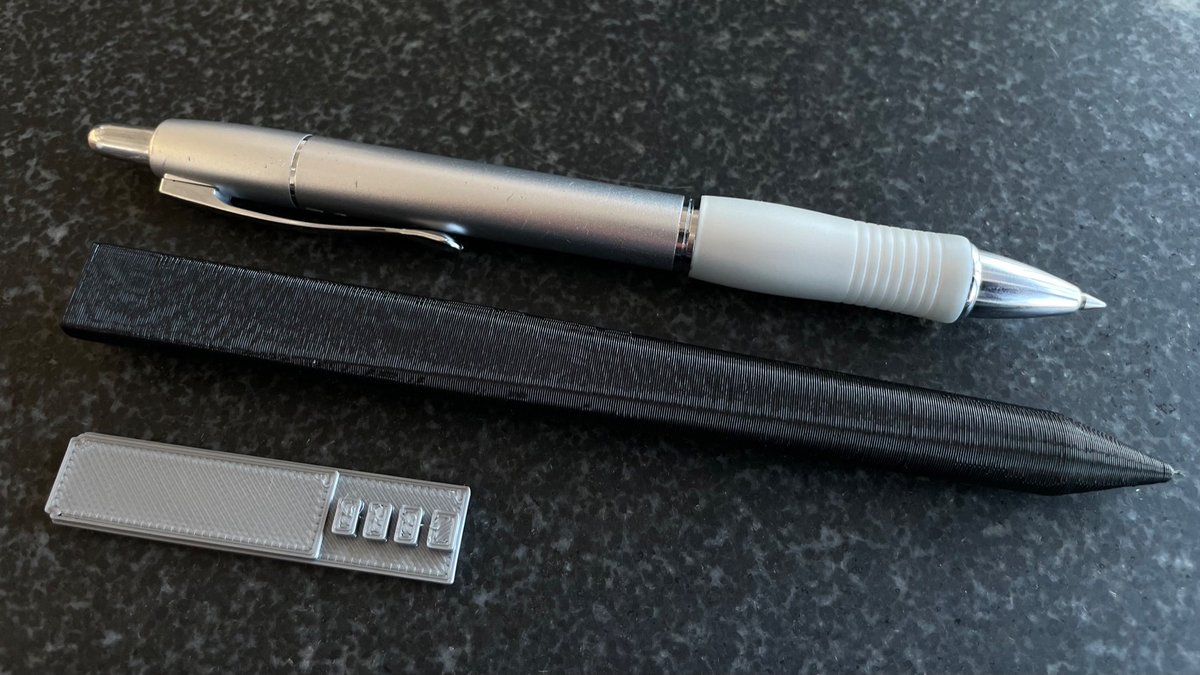
(original)
Replying to @enzinolombardi
😍
(original)
I have a mighty need. https://twitter.com/adafruit/status/1503398351097765890
(original)
Replying to @MrSplike and @oshpark
haha, I forgot a pull-up on the SPI Flash chip, so I bodged one on and blobbed some solder over a discarded piece of wire I found on a nearby bench. there’s no magic to these things, you can just do whatever works!
(original)
Replying to @josecastillo
liked this one less. Wordle 268 5/6*
⬛⬛⬛🟨🟨
⬛⬛🟨🟨⬛
⬛🟨⬛🟨🟨
🟩⬛🟩🟩🟩
🟩🟩🟩🟩🟩(original)
Replying to @FreXxX and @playdate
It is! In fact you can get the exact display they’re using from DigiKey :) https://www.digikey.com/en/products/detail/sharp-microelectronics/LS027B7DH01A/5054067
(original)
Replying to @GregDavill and @oshpark
🤯
(original)
Replying to @darianbjohnson
Yea it’s fascinating how different the chips are; the D21 groups a whole bunch of functionality (including the oscillators) into its “System Controller,” whereas the L21 has a “Supply Controller” with other functionality (and the oscillators broken out into a separate subsystem).
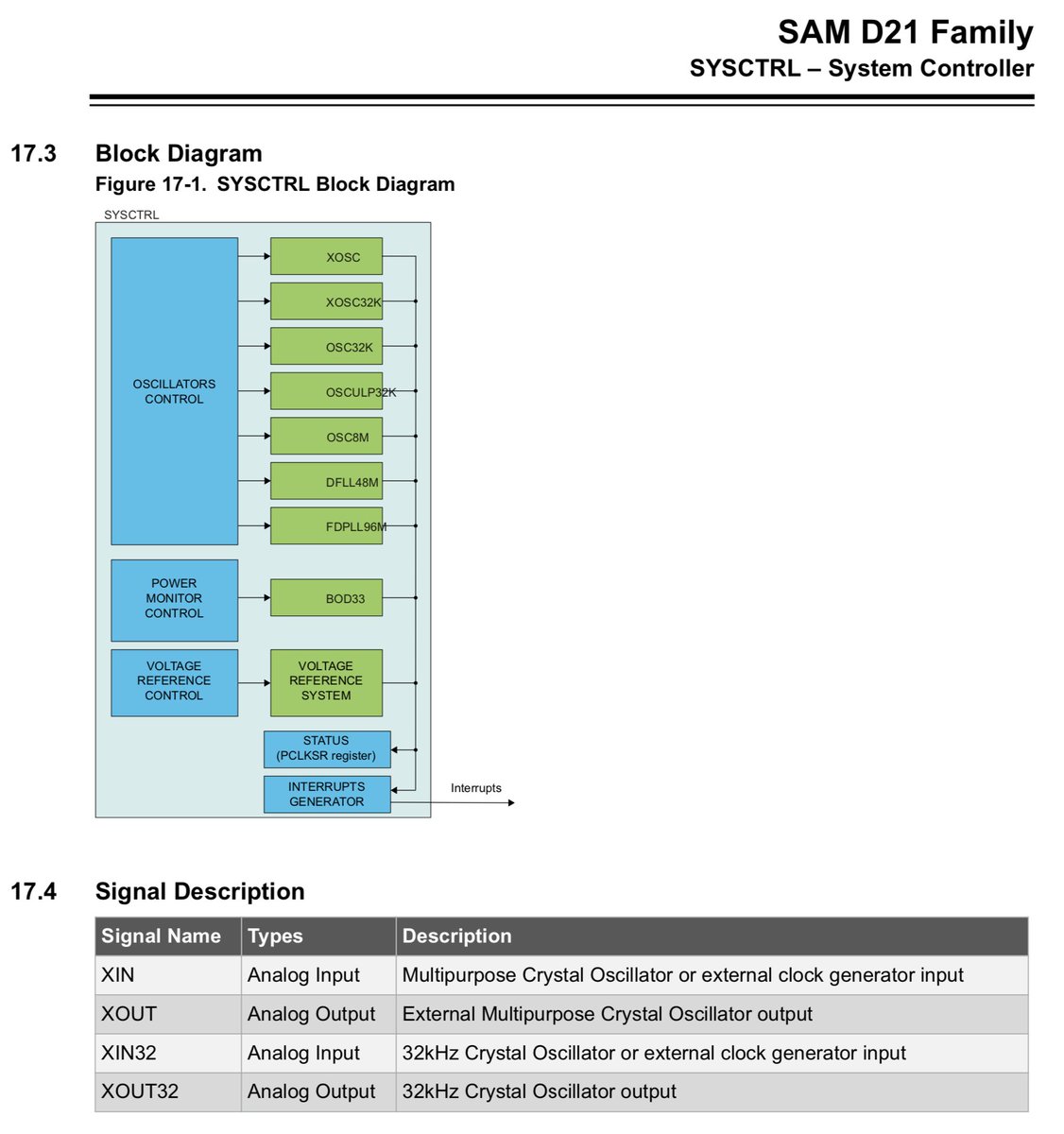
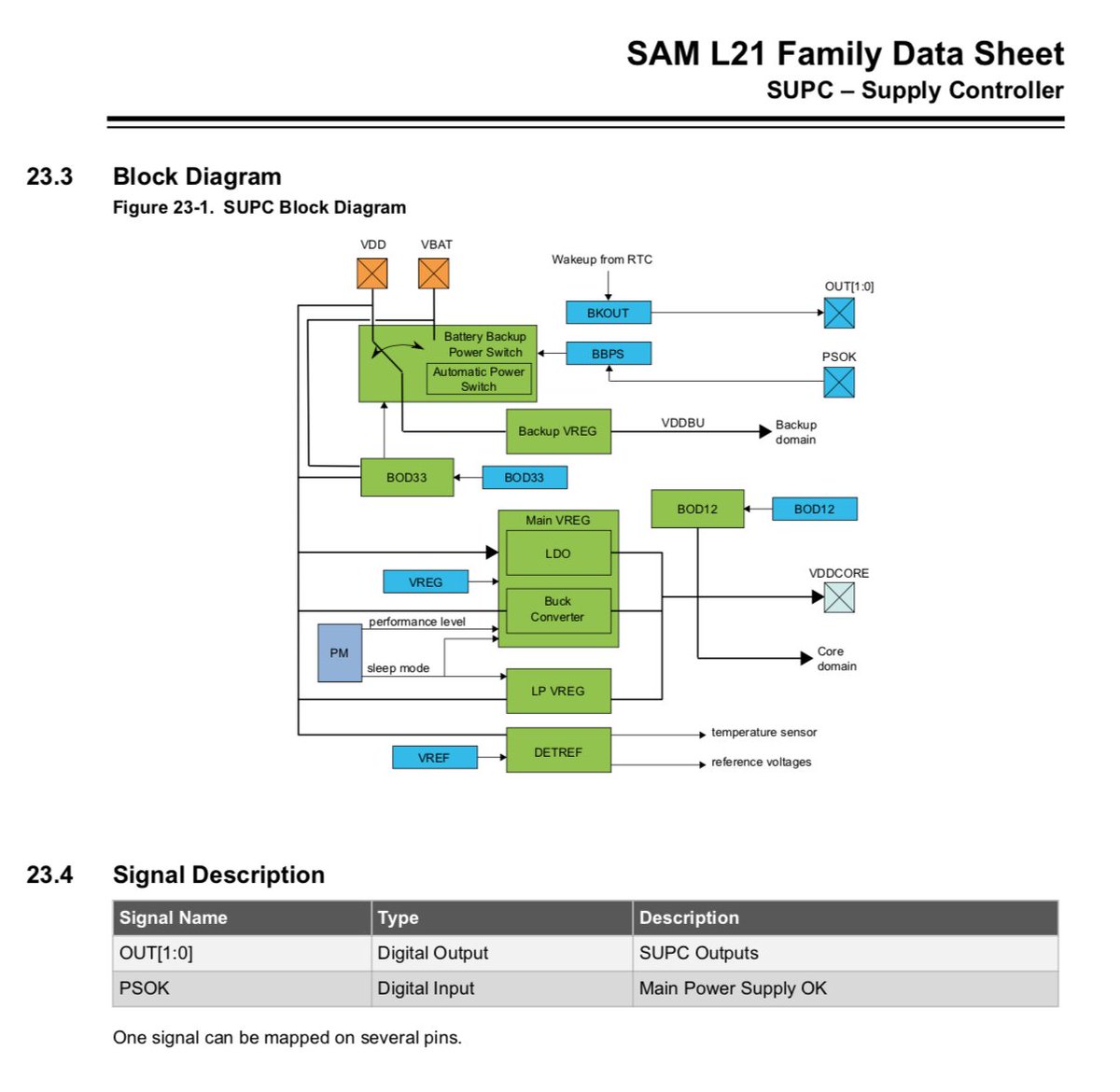
(original)
Replying to @darianbjohnson
Alas I don’t believe it can. The D21 lacks the same supply controller peripheral, as well as the ultra low power BACKUP mode where this is most useful. Since you can only go as low as STANDBY, I think the strategy would be to sleepwalk a TC peripheral for this purpose.
(original)
Replying to @jit_j and @oshpark
I’ll publish the design files soon. Alas the chips you’d need to make this have a lead time of over a year, but maybe someday…
(original)
Replying to @deshipu and @oshpark
I would love a bigger display for like a palmtop. I also see they have some color ones in active production, but those seem to be even more unobtanium. The one I’m testing here is cool though: 128x128 pixels and not that expensive, all things considered. https://www.digikey.com/en/products/detail/sharp-microelectronics/LS013B7DH03/5300387
(original)
Replying to @jit_j and @oshpark
Tough to say as yet; this demo just displays a static image and goes into deep sleep. FWIW the display’s data sheet suggests 4µA for a static image and 17µA updating at 1 Hz. Napkin math, it would probably consume twice as much current while active (but the battery is 2x bigger).
(original)
Replying to @josecastillo
Useful pro-tip: if working with these displays, you know you need a square wave for the EXTCOMIN pin. If you’re using a SAML21/D51, you can have the supply controller generate it for you with almost no power hit! Code here, tho note that only one or two pins have this capability.
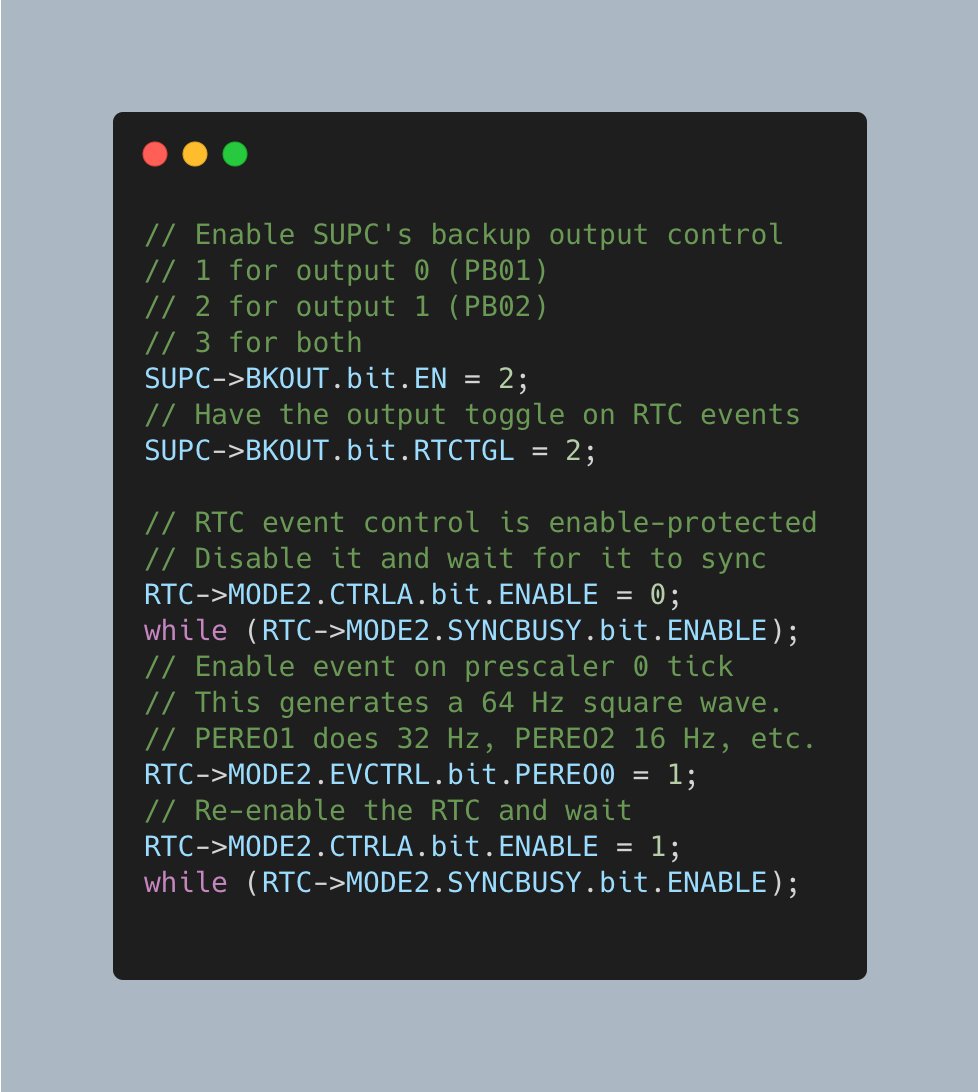
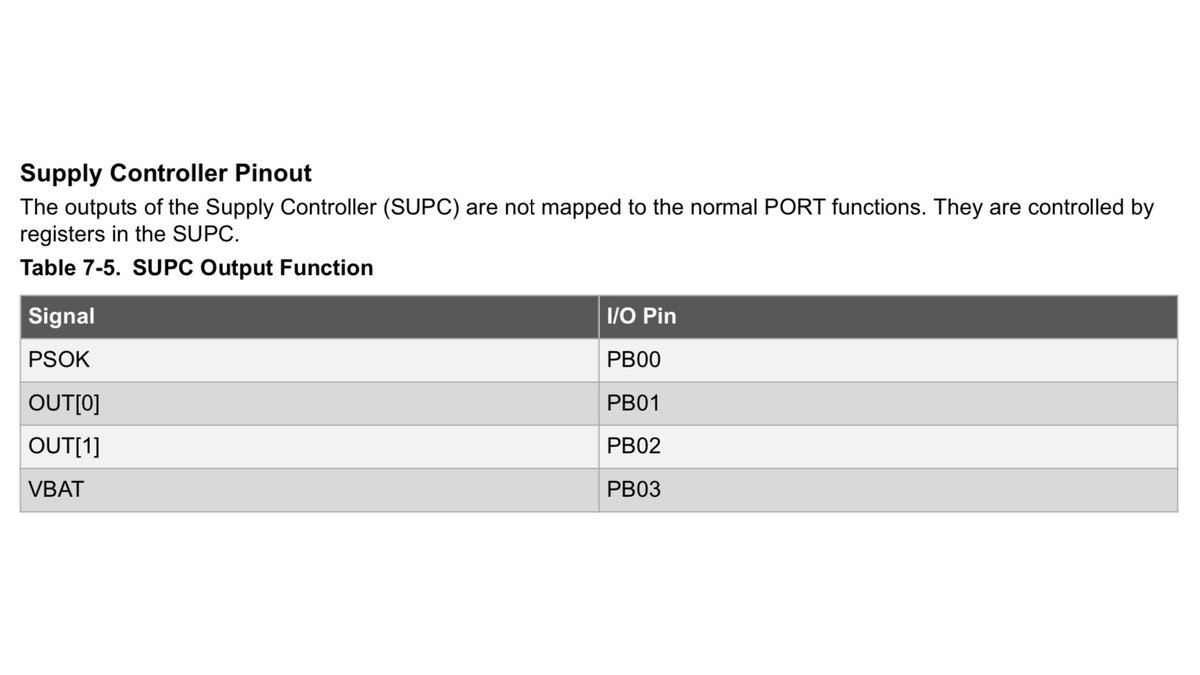
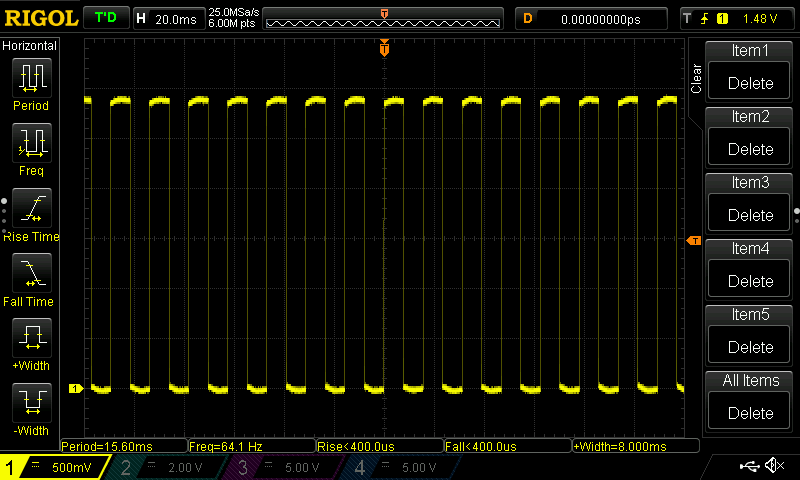
(original)
From the Oddly Specific R&D Department: the Memory Display Gadget. This isn’t a product really; I just wanted an excuse to play with this display + a low power MCU. With the screen on and the microcontroller in BACKUP mode, this thing consumes under 5 µA from a 200 mAh coin cell.
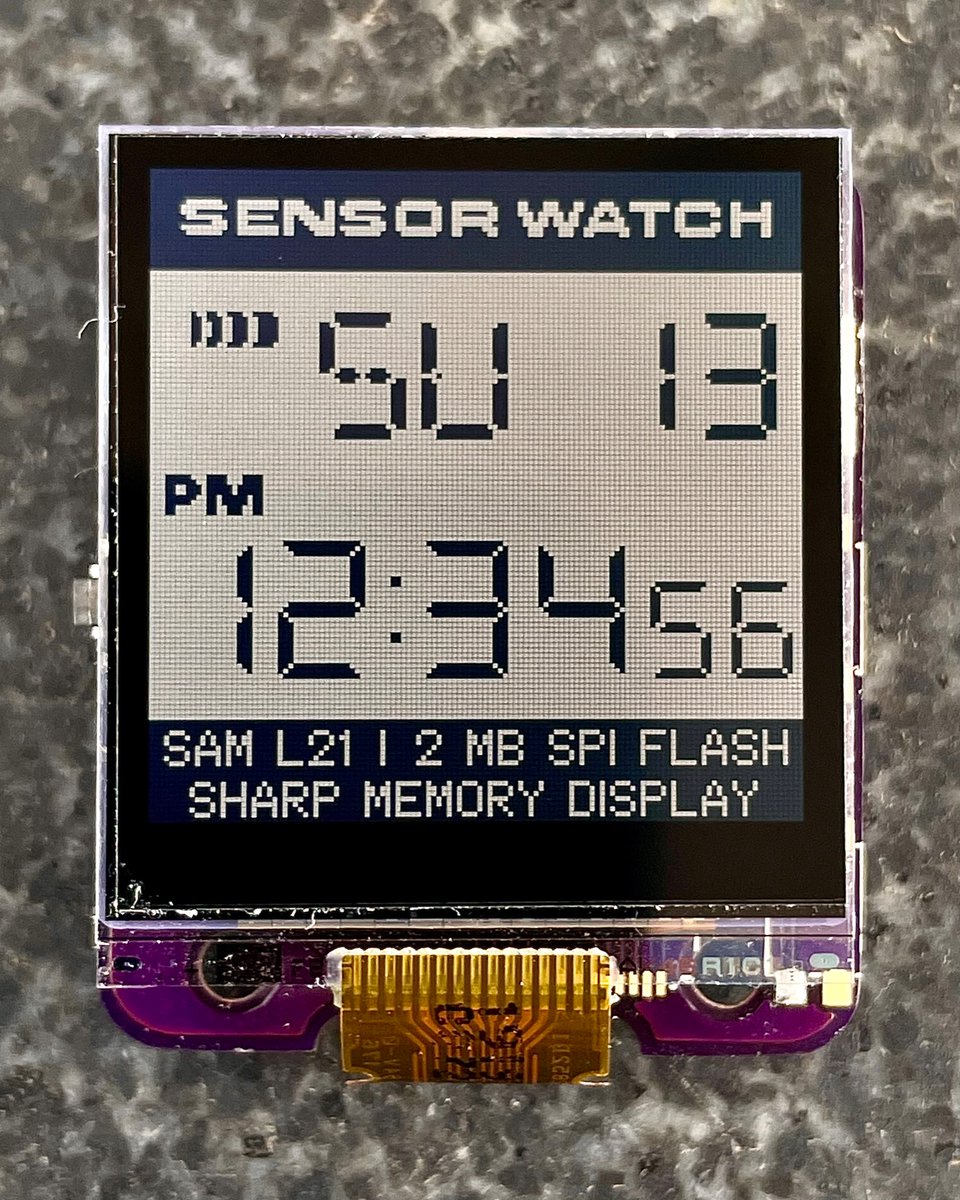
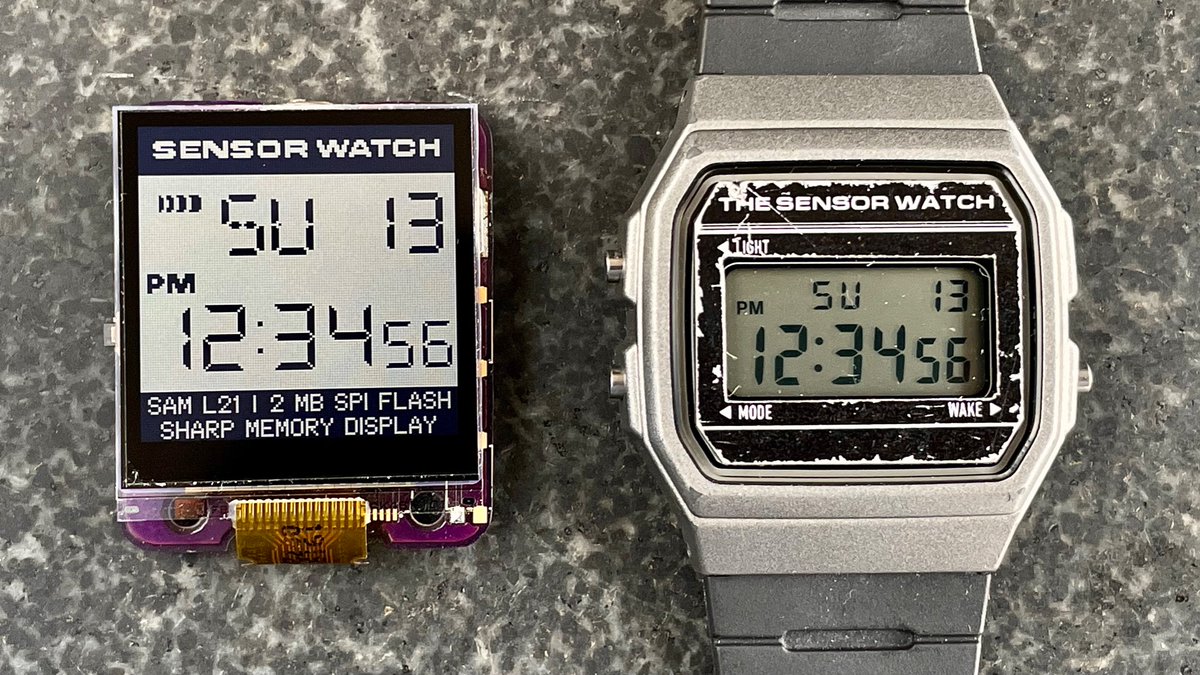
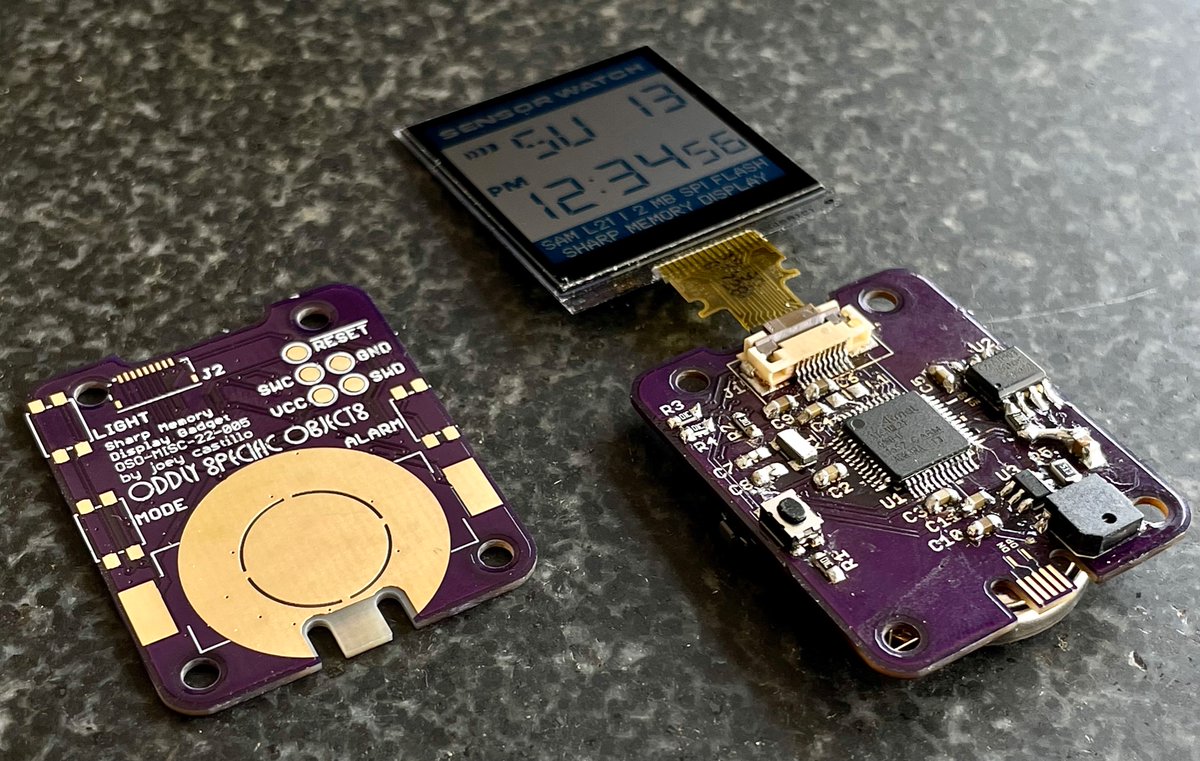
(original)
Replying to @josecastillo
I liked this one. Wordle 267 3/6*
⬛⬛⬛🟨⬛
🟨🟩🟨⬛⬛
🟩🟩🟩🟩🟩(original)
Replying to @josecastillo
Bit by bit. Wordle 266 4/6*
🟨⬛⬛⬛⬛
⬛🟨⬛⬛🟨
🟩🟩⬛🟩⬛
🟩🟩🟩🟩🟩(original)
shower thought: if you were born in 1989, a republican has won the popular vote for president precisely once, yet they’ve been in power for half your life.
(original)